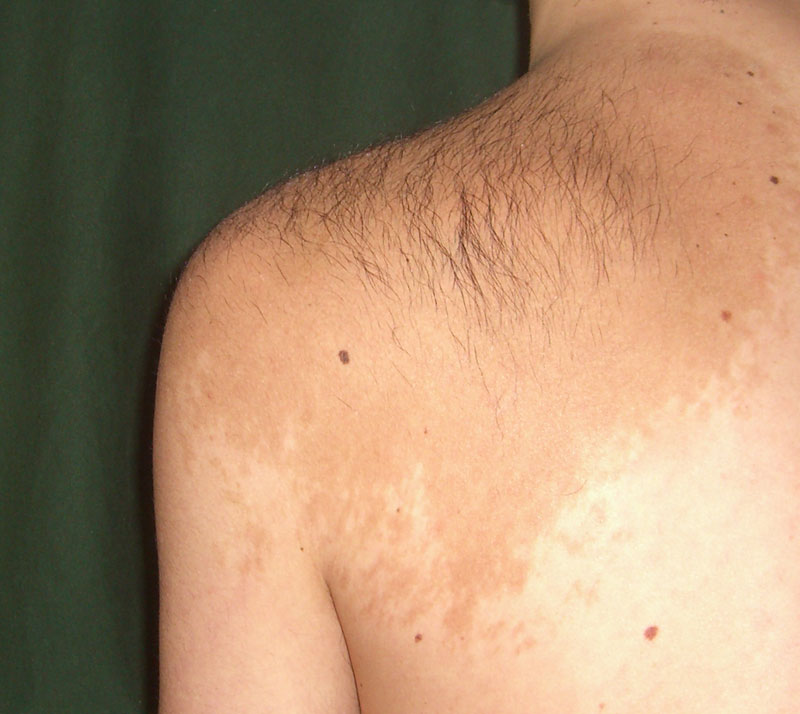Becker Nevus Syndrome

Clinical Features
Happle and Koopman (1997) reviewed 23 cases of a syndrome characterized by the presence of a Becker nevus in association with unilateral hypoplasia of breast or other cutaneous, muscular, or skeletal defects, all of which usually involve the same side of the body as the nevus. Histopathologic examination showed that the epidermal component of the nevus consisted of slight acanthosis and hyperpigmentation of basal cells, while the dermal component consisted of numerous bundles of smooth muscle fibers unrelated to hair follicles. Because the nevus is androgen-dependent, it is much less conspicuous in women and prepubertal boys. Other cutaneous anomalies included extensive patchy hypoplasia of ipsilateral subcutaneous fatty tissue, hypoplasia of contralateral labium minus, and ipsilateral accessory scrotum. Eleven of the 16 female patients had ipsilateral hypoplasia of breast. Ipsilateral hypoplasia of the shoulder girdle or absence of the pectoralis major muscle and ipsilateral shortness of the arm were observed. Skeletal anomalies included hemivertebrae or spina bifida occulta, fused or accessory cervical ribs, pectus excavatum, pectus carinatum, and internal tibial torsion. Scoliosis occurred in 28%. The male-to-female ratio was 1:2, but Happle and Koopman (1997) suggested that with more thorough clinical studies the true ratio would probably be 1:1. All cases have been sporadic. Happle (1995) proposed that the phenotype results from loss of heterozygosity for the underlying allele and is hence another example of paradominant inheritance.